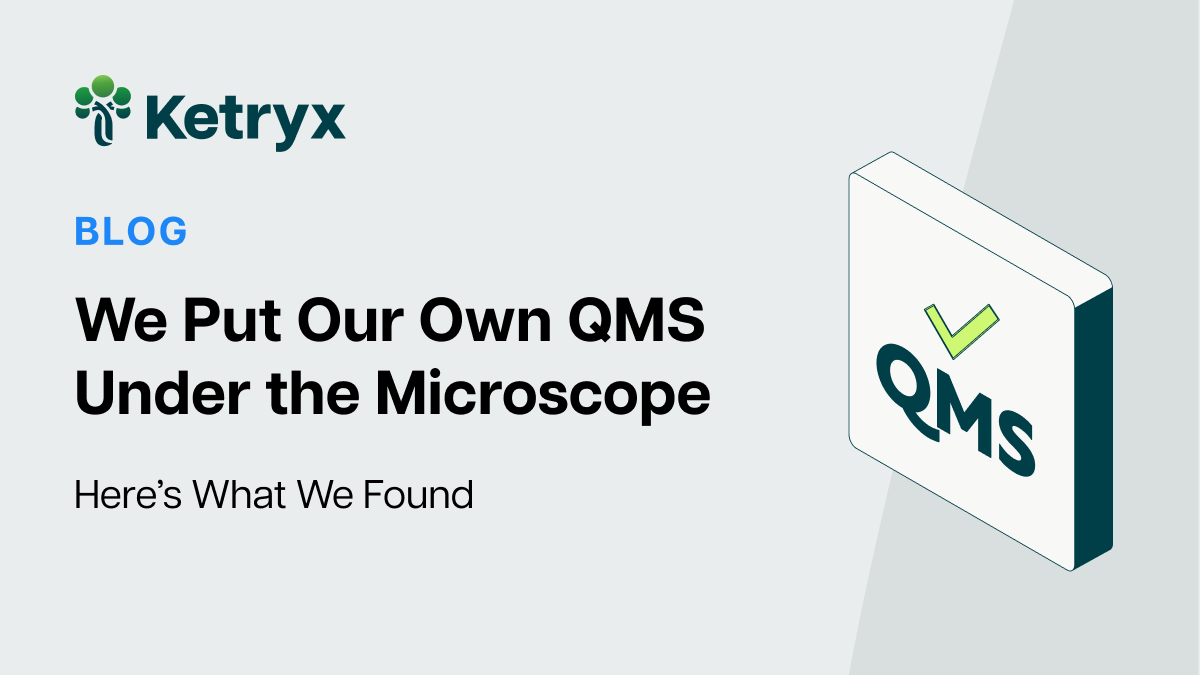
The Best RTM Tools for Agile Teams: Looking Beyond Excel
Table of Contents
In the software as a medical device (SaMD) industry, ensuring compliance with regulatory requirements is paramount. One critical aspect of this work is the maintenance of a robust and accurate Requirements Traceability Matrix (RTM). For years, Excel was the gold standard tool for building and managing RTMs. Medical device manufacturers continue to use it as the go-to tool for traceability, tests, dependencies, and project management. However, as the industry evolves, systems and software become more complex, and regulatory expectations increase, it has become clear that Excel can no longer remain the standard-bearer for maintaining FDA-grade RTMs. In this article, we will delve into the reasons behind this needed shift and explore more suitable alternatives.

What originally made Excel the gold standard for requirements traceability?
Excel's widespread use in requirements traceability can be attributed to several factors.
- Excel is a versatile and widely accessible software tool. Most individuals, regardless of their technical expertise, are familiar with Excel's interface and basic functionalities.
- Excel provides a simple way to create and organize tables, making it easy to track requirements, specifications, and their relationships.
- Excel’s formula capabilities allow for basic calculations, sorting, and filtering, further aiding in managing complex RTMs.
- Excel's flexibility allows users to customize their RTMs to meet specific project needs.
What has changed in the medical device software industry?
The software as a medical device industry has witnessed significant advancements in recent years, and regulatory bodies have responded by raising the bar for compliance standards. These changes have created new challenges that Excel struggles to address effectively. Some key developments include:
- Increasing Complexity: Modern medical devices are significantly more complicated than they were just twenty years ago…becoming more intricate and incorporating complex algorithms, artificial intelligence, and machine learning.
- CI/CD Tools: Cloud-based tools for software development have exploded with highly adopted point solutions like Jira, Confluence, GitHub, and Snyk. Product development and engineering teams use a hodge-podge of these various tools in order to be agile and improve overall productivity.
- Regulatory Requirements: Regulatory authorities, such as the FDA, are demanding more rigorous documentation and evidence of compliance. They expect comprehensive traceability matrices that clearly link requirements, design inputs, design outputs, verification and validation activities, risk management, and other critical aspects.
- Collaboration and Version Control: In today's industry, projects often involve multiple stakeholders working in geographically dispersed teams. Collaborative work and real-time updates are crucial to maintaining accuracy and avoiding costly errors.
Why Excel is no longer sufficient for maintaining a Requirements Traceability Matrix
- Limited Scalability: As projects grow in complexity, the number of requirements and their relationships increases exponentially. Excel's lack of scalability makes it cumbersome to manage large-scale RTMs effectively. It can lead to performance issues, slow data processing, and increased error rates, jeopardizing the integrity and accuracy of the data.
- Error-Prone and Time-Consuming: Manual data entry and formula-driven calculations in Excel are prone to human error. With the adoption of so many cloud-based tools and real-time collaboration, the amount of work required to ensure that every piece of documentation, and version, is correctly put into Excel is impossible. Maintaining an FDA-grade RTM requires meticulous attention to detail and accuracy, making Excel's reliance on manual processes a liability. Furthermore, updating and maintaining the matrix in Excel can be time-consuming, detracting from more value-added activities.
- Audit Trail and Compliance: Audits and inspections are routine occurrences in the medical device industry. Regulatory bodies require an audit trail that demonstrates the history of changes made to the RTM. Excel lacks robust built-in features for maintaining a comprehensive and easily auditable change history, potentially raising compliance concerns.
If Excel doesn’t work for RTM, why aren’t companies moving on to new tools?
Change is hard, especially when it involves people. And, even more so in a highly regulated environment that needs to be kept accurate, safe, and secure. From our conversations with hundreds of companies, we consistently hear the following:
- Evolution: People believe they can slowly evolve their processes as needed to comply with new regulations and software release cycles.
- Cost: People believe it is too expensive to implement a new system.
- Training: People can’t comprehend changing their existing processes and retraining their workforce while remaining compliant.
- Time: They believe the amount of time needed for retraining and the delays it would cause to existing product development cycles is intolerable.
Replacing Excel for Requirements Traceability doesn’t have to be overwhelming
We hear consistently that the idea of implementing a new tool within an established company and deep quality processes feels overwhelming. We understand and empathize with this. (Note to start-ups: do it now!) However, it is important to recognize that much of what is overwhelming are the people, and the manual processes they must follow. Once you realize that a huge amount of that can be automated, it is actually less daunting. For example, software-based solutions (like Ketryx) can:
- Enforce your unique processes in cloud-based tools, significantly reducing the feared "retraining" burden.
- Automate and generate the vast majority of documentation needed, significantly easing the load on QA/RA teams.
- Enforce your manual and approval cycles across the entire SDLC
- Experts abound to guide and support the transition, ensuring a smooth and effective switch.
Tools Can Significantly Simplify Requirements Traceability
There are new tools, like Ketryx, that introduce dynamic and intelligent traceability mechanisms unmatched in Excel. They leverage emerging technologies such as dev tool integration, Artificial Intelligence (AI) and Machine Learning (ML) to analyze vast amounts of data and establish traceability links that would be impossible for humans to handle. Users experience the following benefits:
- Enable users to ensure that every requirement is properly mapped and accounted for across the systems they already use
- Provides a comprehensive overview of the entire development process, highlighting gaps or inconsistencies that might otherwise go unnoticed.
- Maintain real-time visibility and access to the traceability matrix from anywhere
- Reduce the risk of errors, improve efficiency, and ensure compliance with regulatory requirements.
The Best Requirements Traceability Matrix Tools Today
While Excel served as a reliable tool for building and maintaining requirements traceability matrices in the past, the growing complexity of medical devices, and SaMD, industry demands more robust and efficient solutions. The increasing complexity of devices, regulatory requirements, and the need for collaboration and version control call for alternatives that offer scalability, automation, and comprehensive auditability. Embracing specialized tools specifically designed for requirements management and traceability can help organizations stay ahead in a rapidly evolving industry, ensuring compliance, reducing risks, and ultimately delivering safer and more effective medical devices.
This is exactly why we built Ketryx, a developer-first way to build medical software. Ketryx connects the tools your team already uses and loves with existing quality systems while enforcing your SOPs exactly as written. This framework eliminates the tedious and error-prone copy/pasting plaguing many teams in safety-critical environments. With Ketryx, you can automatically generate a FDA-grade requirements traceability matrix and perform design verification and software validation in the tools you already use to support your CI/CD pipeline, releasing validated software as frequently as needed. You can try it for yourself here or book a demo with us here.
Want to learn more about Requirements Traceability Matrices? Try our blog post The Ultimate Guide to RTMs, or visit the Ketryx Learning Center to download the eBook Discover Why Traceability Doesn't Have to be So Hard

Jake brings experience that fuses technology and quality systems. His professional journey began in operations, fostering a deep understanding of complex, safety-critical systems; prior to Ketryx, he was a manager in a GMP pharmaceutical plant at Amgen. This foundation has profoundly shaped his approach to tech, where he currently serves as the Vice President of Client Operations at Ketryx. Jake holds an MBA in Operations and Logistics and a Master's degree in Systems Engineering from MIT, where he was a Leaders for Global Operations (LGO) Fellow.



